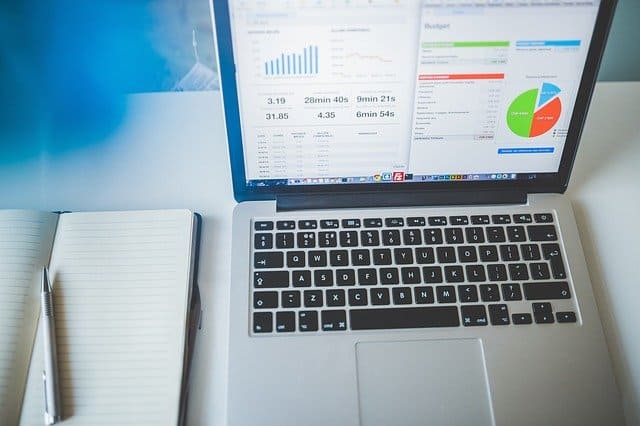Ever wondered how researchers are able to collect enormous amounts of data and use it effectively while ensuring accuracy and reliability? With the explosion of AI research over the past decade, data collection has become even more critical. Data collection tools are vital components in both qualitative and quantitative research, as they help in collecting and analyzing data effectively.
The process involves the use of different techniques and tools that vary depending on the type of research being conducted. But with so many different tools available, it can sometimes be overwhelming to know which ones to use.
So, in this article, we’ll discuss some of the commonly used data collection tools, how they work, and their application in qualitative and quantitative research. By the end of the article, you’ll be confident about which data collection method is the one for you. Let’s get going!
What are the Data Collection Methods and How to Use Them? (Tools for Qualitative and Quantitative Research)
Data Collection – Qualitative Vs. Quantitative
When researchers conduct studies or experiments, they need to collect data to answer their research questions, which is where data collection tools come in. Data collection tools are methods or instruments that researchers use to gather and analyze data.
Data collection tools can be used in both qualitative and quantitative research, which are two different research methodologies. Qualitative research is focused on understanding people’s experiences and perspectives, while quantitative research is focused on gathering numerical data to test hypotheses.
Importance of Data Collection Tools
Data collection tools are essential for conducting reliable and accurate research. They provide a structured way of gathering information, which helps ensure that data is collected in a consistent and organized manner. This is important because it helps reduce errors and bias in the data, which can impact the validity and reliability of research findings. Moreover, using data collection tools can also help you analyze and interpret data more accurately and confidently.
For example, if you’re conducting a survey, using a standardized questionnaire will make it easier to compare responses and identify trends, leading to more meaningful insights and better-informed decisions. Hence, data collection tools are a vital part of the research process, and help ensure that your research is credible and trustworthy.
5 Types of Data Collection Tools
There are various types of data collection tools that researchers use, depending on the research methodology and the nature of the data they aim to collect, but here are the five most commonly used data collection tools:
- Interviews
- Surveys
- Observations
- Focus groups
- Case studies
Let’s explore these methods in detail below, along with their real-life examples.
- Interviews
Interviews are amongst the most primary data collection tools in qualitative research. They involve a one-on-one conversation between the researcher and the participant and can be either structured or unstructured, depending on the nature of the research. Structured interviews have a predetermined set of questions, while unstructured interviews are more open-ended and allow the researcher to explore the participant’s perspective in-depth.
Interviews are useful in collecting rich and detailed data about a specific topic or experience, and they provide an opportunity for the researcher to understand the participant’s perspective in-depth.
Example: A researcher conducting a study on the experiences of cancer patients can use interviews to collect data about the patients’ experiences with their disease, including their emotional responses, coping strategies, and interactions with healthcare providers.
- Surveys
Surveys are a popular data collection tool in quantitative research. They involve asking a series of questions to a group of participants and can be conducted in a lot of different mediums, such as in person, via phone or email, or online. Surveys are helpful in collecting large amounts of data quickly and efficiently, and they can be used to measure attitudes, beliefs, and behaviors.
Example: A researcher conducting a study on the public’s opinion on a political issue can use surveys to collect data about people’s beliefs, opinions, and values related to that issue.
- Observations
Observations involve watching and recording the behavior of individuals or groups in a natural or controlled setting. They are commonly used in qualitative research and are useful in collecting data about social interactions and behaviors. Observations can be structured or unstructured and can be conducted overtly or covertly, whatever the need of the research is.
Example: A researcher studying the behavior of children in a playground can use observations to collect data about how children interact with one another, what games they play, and how they resolve conflicts.
- Focus Groups
Focus groups involve bringing together a group of individuals to discuss a specific topic or issue and are also used while conducting qualitative research. This method is quite useful in collecting data about attitudes, beliefs, and opinions. Just like surveys, focus groups can also be conducted over a variety of mediums, such as in person or online. Another benefit of focus groups is that they provide an opportunity for participants to interact with one another, which can lead to a more comprehensive understanding of the topic being studied.
Example: A researcher studying the attitudes of consumers towards a new product can use focus groups to collect data about how consumers perceive the product, what they like and dislike about it, and how they would use it in their daily lives.
- Case Studies
Case studies involve an in-depth analysis of a specific individual, group, or situation and are useful in collecting detailed data about a specific phenomenon. Case studies can involve interviews, observations, and document analysis and can provide a rich understanding of the topic being studied.
Example: A researcher studying the impact of a new teaching method can use a case study to collect data about the experiences of a specific group of students who were taught using the new method, including their learning outcomes and perceptions of the method.
-

The Importance of Data Analysis in Research
-

The 5 Methods of Collecting Data Explained
-

Data Analytics Vs. Business Analytics – Top 5 Differences
How to Use Data Collection Tools
Now that we have discussed some of the commonly used data collection tools, it is essential to understand how to use them effectively. Here are the detailed steps involved in using data collection tools that you can follow:
- Plan the Research
The first step in using data collection tools effectively is to plan the research carefully. This involves defining the research question or hypothesis, selecting the appropriate methodology, and identifying the target population. A clear research plan helps select the most appropriate data collection tool that aligns with the research objectives, hence building a solid base for rest of the steps.
- Choose the Right Method
Once the research plan is completed, the next step is to choose the right data collection tool. It’s essential to select a tool/method that aligns with the research question, methodology, and target population. You should also pay strong attention to the associated strengths and limitations of each method and choose the one that is most appropriate for their research.
For example, if the research objective is to measure attitudes, beliefs, and behaviors, a survey may be the most appropriate data collection tool.
- Prepare for Data Collection
Preparing for data collection involves creating a protocol, training data collectors, and testing the tool. At this point, you need to ensure that the data collection process is standardized and all data collectors are familiar with the tool and the research objectives.
Creating a protocol that outlines the steps involved in data collection and data recording is important to ensure consistency in the process. Additionally, training data collectors and testing the tool can help in identifying and addressing any potential issues.
- Collect Data
This step is where you actually collect the data. It involves administering the tool to the target population. Ensuring that the data collection process is ethical and that all participants give informed consent is essential. The data collection process should be done systematically, and all data should be recorded accurately to ensure reliability and validity.
- Analyze Data
Finally, the last step left after collection is to analyze the data. This involves organizing the data, cleaning it, and conducting statistical or qualitative analysis. The choice of analysis method will depend on the research question and methodology.
For example, if the research objective is to compare the means of two groups, a t-test may be used for statistical analysis. On the other hand, if the research objective is to explore a phenomenon, the qualitative analysis may be more appropriate.
Wrap Up
Data collection tools are critical in both qualitative and quantitative research, and they help in collecting accurate and reliable data to build a solid foundation for every research. Selecting the appropriate tool depends on several factors, including the research question, methodology, and target population. Therefore, careful planning, proper preparation, systematic data collection, and accurate data analysis are essential for successful research outcomes.
FAQs
Lastly, let’s discuss some of the most frequently asked questions along with their answers so you can jump straight to them if you want to.
Qualitative data collection tools are used to collect non-numerical data, such as attitudes, beliefs, and experiences, while quantitative data collection tools are used to collect numerical data, such as measurements and statistics.
- What are some examples of qualitative data collection tools?
Examples of qualitative data collection tools include interviews, focus groups, observations, and case studies.
- What are some examples of quantitative data collection tools?
Examples of quantitative data collection tools include surveys, experiments, and statistical analysis.
- Why is it essential to choose the right data collection tool?
Choosing the right data collection tool is crucial as it can have a significant impact on the accuracy and validity of the data collected. Using an inappropriate tool can lead to biased or incomplete data, making it difficult to draw valid conclusions or make informed decisions.
- What are some common challenges faced during data collection?
Some common challenges include difficulty in accessing the target population, low response rates, data collection errors, and ethical concerns. So, always make sure you plan and prepare adequately to address these challenges effectively.

